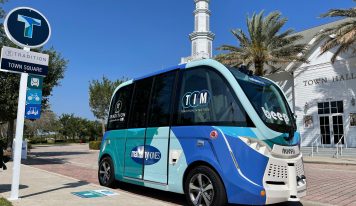If there was one surprise at CES it was the overwhelming amount of car innovation as pointed out by Rob Enderle. We are at the point today where the car is moving from becoming simply a vehicle to a centralized hub for information sharing.
This is more or less what I learned from Ford last year at CES 2013.
In a talk with Ford’s Venkatesh Prasad last week at CES 2014 I had a chance to  discuss the future of the automobile market and he had some great points to make about where the industry is headed. Here is a recap of our conversation.
discuss the future of the automobile market and he had some great points to make about where the industry is headed. Here is a recap of our conversation.
The future is moving faster
Prasad pointed out that the pace of innovation is speeding up but so too is the metabolic rate of change meaning the mutations are happening more quickly. An example that may fit here is the evolution of the 3D TV market. You may recall it was the next big thing forcing content creators and TV manufacturers to refocus their companies and then one day 3D TV became almost unimportant replaced by 4K and curved televisions. In other words, you have to be more nimble than ever as even change is changing rapidly.
The future will be shareable
The point here is companies will have to focus not just on selling cars but finding ways to ensure the service experience is excellent and that the car is shareable. Think the Zipcar network for example. Cars, he says will have to be better at mixed use applications – customizable for non-ownership experiences. Some of the specifics which will enable this future are already here – like doors which unlock when you get close to the car. Another idea many new moms and dads will embrace are child seats which auto lock and don’t require tools or a mechanic to strap in.
The phone replaces the car for dating
Today’s kids would rather have a phone than a car because with a phone, you can get a ride and you can use social networks to get a date. Kids will be reluctant drivers meaning the auto industry will have to learn how to entice them. This is especially true in urban areas where most of the population growth is taking place.
Self-driving is already here sort of
Prasad pointed out that cars today are beginning to employ self-driving technologies – such as the radar system in the new Mustang which prevents a driver from following too closely.
3D printing is changing manufacturing and innovation.
Ford’s Zach Nelson used a 3D printer and an actuator from an Xbox to create a shift knob to vibrate when it was time to upshift. This haptic feedback shift knob allows drivers to focus on driving and keep their eyes on the road and be notified by touch when needed. Software could in-turn be modified to maximize fuel efficiency or to help new drivers learn when to shift.
Innovation is becoming democratized
Prasad pointed out that companies like Google and others have given technological innovation to the masses… Effectively democratizing it. This trend will continue as costs are reduced for technological innovation. In addition, companies like Ford have open-sourced many of their innovations giving easy access to customers and others. In fact, the firmware and applications of the haptic feedback shift knob are open sourced at the OpenXC website allowing new levels of vehicle customization.
This last trend is a huge deal as decades back the auto industry began to get concerned when manufacturers started to more closely integrate their audio system with other auto electronics, making after-market radios less attractive. This new open direction and focus on customizing vehicles in line with user preferences is now reversing this trend.
In other news, just as I finished my meeting with Prasad, I received an alert that Ford CEO Alan Mulally would not be leaving Ford to head Microsoft and an email from my team that we secured a Ford Mustang to give away at ITEXPO in 2 weeks in Miami.





